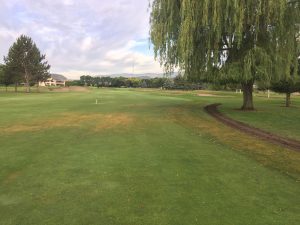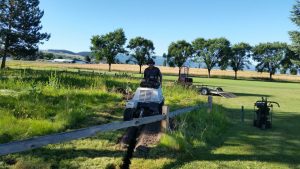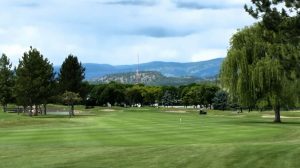A Year of Extremes
2017 has had some extreme weather patterns thus far - from high volumes of snow, to heavy rains, to extreme heat and to smoke cover. As daunting as it seems, we feel that it confirms which of our practices are sound, and where we need to make adjustments to really dial in the conditions of the golf course.
With the high amount of snow in the spring, we saw how our winter preparation was generally able to handle it. From our disease management stand point, we saw very little disease. Where we did (the practice green as an example), it provides different input to allow us to better prepare for next winter. The aeration and other cultural programs for the greens, tees and fairways are showing that we can get the course out of dormancy properly and have a smooth transition into the year.
With copious amounts of rain this spring, our drainage system was tested. We saw that our perimeter drains that were put in can handle the normal amounts of rain, but when we hit higher levels, things needed to be addressed. We made improvements on 10 fairway, continued down 11 and 12, and finished just past 6 tee. This should improve the drainage system’s ability to handle the above ground water and the high water table that exists throughout our property. We found that our transfer pipes from pond to pond that deal with the natural spring water were compromised. Just to the right of 10 green, there was a 32 inch pipe that had collapsed. This shrunk the pipe to about 2 inches. We have removed the comprised pipe and started to install proper drainage pipe in its place.
The heat has shown us several things. First, that our minor irrigation head improvements and nozzles tweaks have improved the uniformity of our system dramatically. We have seen our run times for the system decline, as well as our man hours for hand watering. This allows us to better use these hours focusing on minor improvements and details for the golf course.


The hot weather has exposed more areas where the water coverage is under performing, so we have taken a little time to readjust the sprinkler layout a few holes at a time ( 8 and 12 tee to start). In these long periods of drought it really shows how well our cultural programs are working, how good the fertility program is, how well our soil amendments are, and even how we need to implement a tree root management program. The playing surfaces of the course are holding up great. We attribute this to our management of the soil and root system.
With the warmer weather people tend to want to play earlier. Just a reminder to all - we as a Maintanence team do not want to be in your way! Please allow us to finish up our morning duties so that you can peacefully enjoy the rest of your round. Sometimes waiting 30 seconds can translate into 30 minutes of saved time for us and virtually no disruption to play to you and the groups behind you. In these next few months, as we lose morning light, the time between when our team starts and the tee sheet starts narrows. I ask you to please respect the crew. Look for the crew members to wave or idle down their machine as a sign of acknowledgment before proceeding. If we do not look up or show that we are trying to get out of the way it could mean 2 things: we have 10-15 seconds left to finish what we are doing, or simply that we have not seen you. So again, please take a little caution with our team in these morning tee times.
Gilbert LeBlanc
Golf Course Superintendent
Kelowna Springs Golf Club


